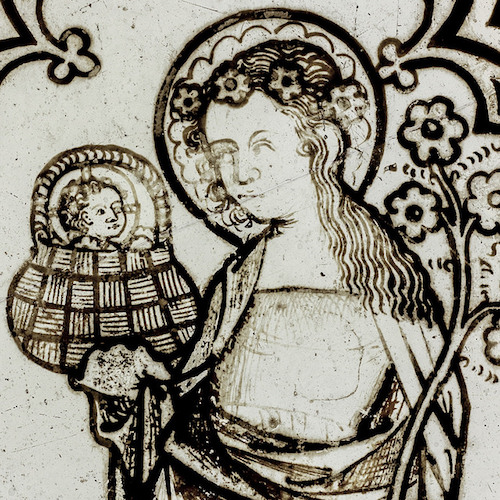We run our website the way we wished the whole internet worked: we provide high quality original content with no ads. We are funded solely by your direct support. Please consider supporting this project.

The Non-Violent Jesus Clothed in Violence
As I’ve argued in several books (for instance, see The Myth of a Christian Nation) as well as in many posts, Jesus refused to use the power that was available to him to defend himself, choosing instead to offer up his life on behalf of his enemies. When we consider that this act constitutes the definitive revelation of God’s eternal nature, and when we combine it with all of Jesus’ other teachings regarding the call for his followers to reflect God’s character by manifesting indiscriminate love and refraining from violence (e.g. Matt 5:39-45), we are led to the breathtakingly beautiful conclusion that it is against God’s nature to engage in violence.
Think of it like this. Since what God wills must reflect who God is, the fact that love is the essence of what God wills must imply that love must be the essence of who God is. The same could be argued for non-violence. On the assumption that there is no incongruity between what God wills and God’s own eternal nature—viz. on the assumption that God isn’t a hypocrite—then the fact that Jesus’ example and teaching indicates that enemy-loving non-violence is central to what God wills must imply that enemy-loving non-violence is central to who God is.
If this is accepted, it means that God can no more act violently than God can lie or deny himself. For God to act violently, in other words, would be tantamount to God lying and to God denying himself.
This obviously creates a dilemma. If it is against God’s nature to act violently, what are we to do with the portraits of God in the OT that depict him sanctioning and engaging in violence? To the extent that any portrait is violent, it contradicts the very essence of the God revealed in Christ and thus cannot be accepted as an accurate depiction of God. Yet, Jesus himself, together with the whole NT and the historic-orthodox Church, embrace the entire Old Testament, including these violent portraits of God, as divinely inspired for the ultimate purpose of bearing witness to him (e.g. Jn 5:39-45) and especially to his death and resurrection (e.g. I Cor 15:3). I thus do not believe we are free to simply reject these portraits. Though we can’t consider them to be accurate reflections of God’s character, they must nevertheless somehow bear witness to the revelation of God in the crucified Christ.
We find ourselves caught in a dichotomy of allegiances. Fidelity to Christ requires we accept the cross as the definitive revelation of God and that we thus reject these violent divine portraits as accurate revelations of God. But fidelity to Christ also requires that we accept these portraits as somehow bearing witness to the cross as the definitive revelation of God. Only to the extent that we feel the pinch of this dichotomy of allegiances will we be motivated to dig as deep as we need to dig to discern what this “somehow” might be that resolves our dilemma.
The Cruciform Hermeneutic that I propose in Crucifixion of the Warrior God is my attempt to dig deeper and to resolve this dichotomy. I take my cue from Luther when he described a Christ-centered approach to interpreting the OT as looking for the baby Jesus wrapped in swaddling clothes. In fact, Luther went so far as to claim to “find nothing in Scripture except Christ crucified” (though he unfortunately never showed how this held true for the OT’s violent portraits of God). My claim is that, if we remain confident that God is as beautiful as the crucified Christ reveals him to be while also tenaciously holding fast to the conviction that all Scripture somehow bears witness to him, we will eventually find him wrapped up in all Scripture, including in its often horrifically ugly portraits of God.
Editor’s Note: Cross Vision is the popularized version of Crucifixion of the Warrior God, and it is scheduled for release on August 15th. For those who are interested in this way of interpreting Scripture’s violent divine portraits, ReKnew will be hosting a conference September 21-23 at Woodland Hills Church in Saint Paul, MN. We hope you can join us!
Photo credit: campra via Visualhunt / CC BY-NC-ND
Category: General
Topics: Interpreting Violent Pictures and Troubling Behaviors
